Every experienced gardener knows that country work is not simple. The problems of fruit trees, especially apple trees, are becoming a serious problem for the summer resident. Instead of juicy fruits, we get sick trees with healthy pests.
Unfortunately, nowadays there are many diseases affecting apple trees. The main thing - as soon as possible to detect the disease and begin timely treatment, so you do not regret that the tree died. Let's talk about the most common diseases of apple trees.
Table of contents
Scab

Scab apple - one of the most common and harmful diseases for your fruit favorites.
Ways to control pests
A scab can and should be treated. There are several options for the fight:
- The main method of struggle - This is the destruction of the affected leaves of the apple tree.
Every autumn, gardeners rake the fallen leaves, sending them to the compost, they cover the ground by 7-8 cm. It also requires cleaning all rotten fruit from the site. It is useful to spray trees with growth stimulants, thereby maintaining the health of the trees.
- Chemical treatment scab
Scientifically proven drugs of chemical origin: “Rajok” fungicide; systemic fungicide "Strobe"; contact drug "Abiga-Peak"; solution "Fitolavin".
Prevent dark spots
- Removal of all existing weeds;
- A selection of extremely resistant varieties of apple trees;
- Regular removal of deeply affected, fallen, rotten fruit;
- Collection of high-quality fruits, intended only for seasonal storage;
- Separate storage of absolutely all the collected fruit.
Flycat - dots on apples
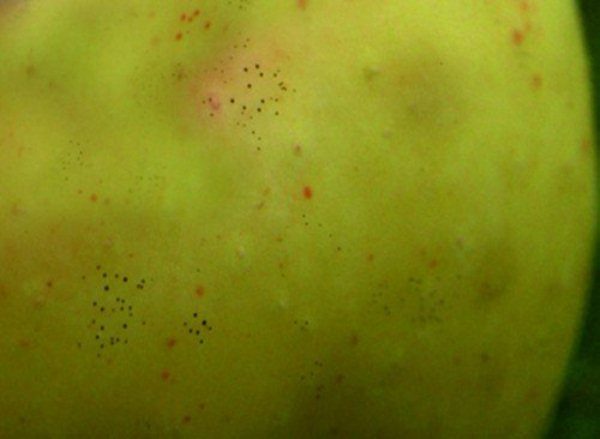
The name is precisely because black dots appearing in ailments resemble the biological waste of flies.
Elimination of the disease
For diseases of this type of apple you need to sprayand, if possible, seize land cover. Such drugs as copper sulphate, olecouple can be safely used. All this needs to be done before spring. This will be the first stage of treatment. Later (the second stage) spraying is performed with the help of copper oxychloride, phthalan. In a couple of weeks, the time will come for the third final spraying. It accepts previously used drugs of your choice. It is worth knowing that it is necessary to spray apple trees several times a season. Also solutions can be alternated among themselves.
Mealy dew
Fungal disease, which is distinguished by its short-term spreads throughout the dacha massif. Fungal spores spread rapidly through rain, wind and the human factor. (through the summer inventory).
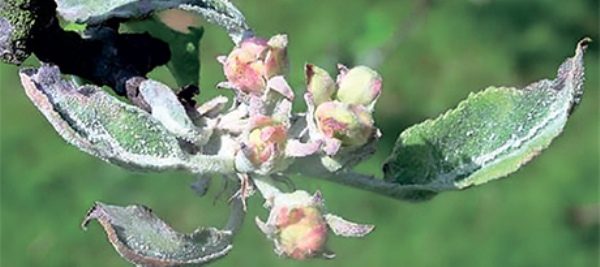
The disease is detected by summer residents in the spring during active blooming of the kidneys. The virus spreads to the entire surface of the apple, settling in white bloom. Fruits spoil, lose taste, often die. When the tree falls ill completely, the ovaries begin to fall off, the branches dry and die. In this case, the dew becomes an expressive brown color.
Prevention
- For the best prevention of disease and protection from dew is carried out triple spraying of still healthy trees with fungicides.
- Helpful sulfur pollination at least four times, but only in summer.
- Room with seedlings must be ventilated. enough times, performing a clear moisture regime and avoiding strong drafts.
How to get rid of white bloom
- Compliance with key agricultural practices, that is soil drain warning.
- Execution of all items disease prevention.
Fruit rot - why it appeared and what to do?
Fruit rot Apple trees - one of the most common diseases of fruit trees in general. Scientific name - Moniliosis Apple.
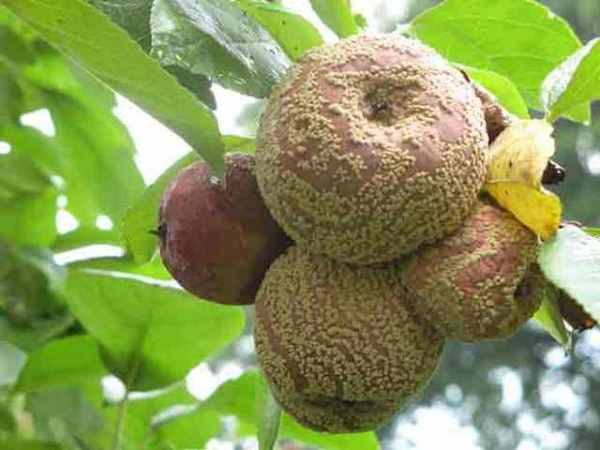
Rot exceeds the scab several times by its harmfulness, because it has the ability to massively infect trees.
Signs of
Foci of disease occur in several places at once, spreading along the surface of the entire fetus. The flesh of the fruit becomes soft, not suitable for nutrition. After a week, brown spots are transformed into vague yellowish circles. This is the oppressive spores of the fungus, through which the infection and fell into the garden.
Branches and rotten fruits left on apple trees are also sources of infection.. If the sanitization of the tree is not carried out properly, the defeat of the fruit grows. Later, the formation hardens, the subsequent multiplication of bacteria occurs in them. Fruit rot can stay in your garden several times per season.
Causes
- Damage and cracks in the bark of the tree;
- The relationship of infected fruit with healthy individuals;
- Damaged apple peel;
- The presence of other diseases in the apple tree;
- Susceptible apple varieties.
How to deal with this problem
- Trim dried branches, bad fruit and dry leaves;
- Recycling from the apple tree;
- Relevant Seasonal harvesting fruits ;
- Spraying crowns;
- Treat other diseases apple trees;
- Try treat all existing infections;
- Protect apple trees from mechanical and chemical damage.
Cytosporosis
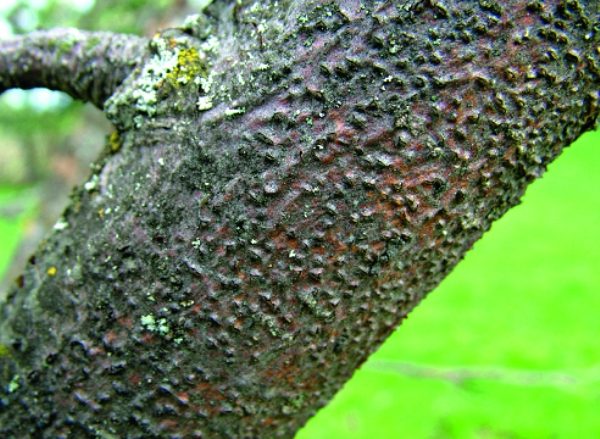
Cytosporosis is a common fungal disease.which mostly affects only weak and old apple trees. It causes individual focal drying of tree bark.
Already dead pieces of bark are covered with a viral fungus, which appears as small bumps. The old branches that are no longer part of the tree are not insured unless the disease is defeated. Weak from frost and scorching sun, the tree dies after about 5 years of struggle with the disease.
Causative agents
The cytospore fungus is the main causative agent of this disease. Its size is very small, not larger than the usual bacteria. The virus hibernates in bark cracks or clots, the so-called spores. Rain and wind carry it to other trees.where he also settles down at the blink of an eye. A person can infect his tree with cytosporosis, simply using garden shears.
Prevention and treatment
It is important to follow a number of rules in the treatment of apple cytosporosis:
- A person needs to maintain the health of their trees, increasing their disease resistance.
- Fertilize potash and phosphate fertilizers trees known to be ill
- Prophylactic spraying trees fungicides.
- Using resistant varieties of apple trees.
For the prevention of cytosporosis whitewashing of trunks and skeletal branches is obligatory (for 10.5 l of water: 3 kg of lime, 300 g of vitriol and 1 kg of clay).
Bacteriosis
Bacteriosis is a very serious disease caused by specific types of bacteria. It can hit a tree sharply and unexpectedly, killing it during one season.
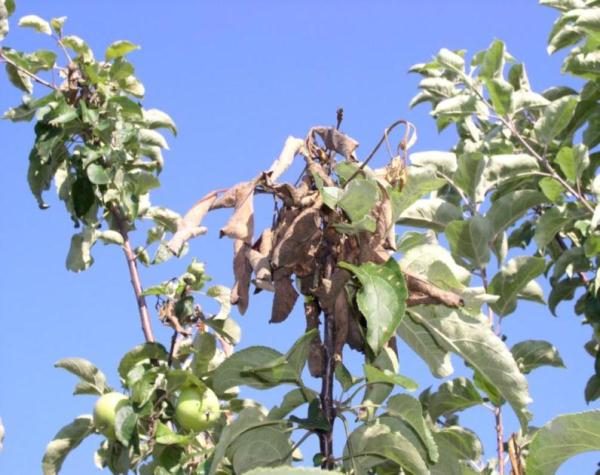
In sick trees, the bark is covered with dark spotswhich will later become the cause of the death of the cortex.Dimples formed by the disease guarantee cracking and peeling of the cortex. The buds begin to turn black, completely taking on the color, the leaves are framed at the edges. All foliage, in the end, twists, fades and hangs on a tree with black icicles. The disease can occur quickly and chronically.
With a quick turn, the tree dies in one summer. In the chronic variant, the tree becomes ill and dies out gradually over the next few years.
Measures to combat apple bacteriosis
- At the very beginning of the development of this disease is recommended process wood with 50% zinc chloride three times with an interval of 3-4 days.
- Autumn and spring cut the affected branches with the capture of 7-8 cm of healthy tissue.
- Disinfect the cut 1% solution of copper sulphate, or 3% solution of ferrous sulfate, or 5% carbolic acid with a mandatory coating of garden putty.
- The best option is bacteriosis prevention in early spring, then when the hated disputes actively proliferate.
Milky luster
The milky luster is a little-studied disease, scientists and breeders are little known for their fight against it. There is a version that shine appears due to freezing of a tree trunk or acute starvation of a plant (water or mineral).
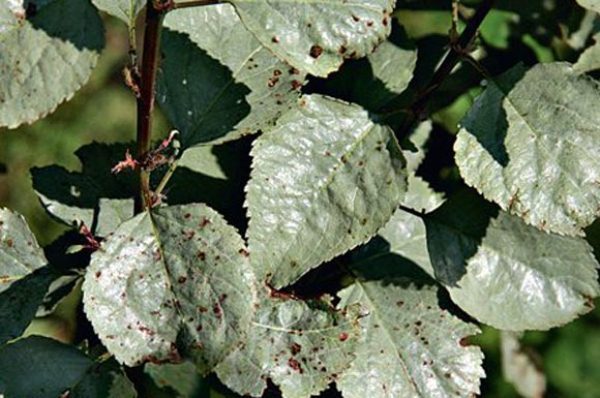
It is believed that infection occurs through poisonous fungus, spores of which penetrate into the tree through cracks or other damage in the bark. The very shine of a gray metallic color, but this is only on the upper side of the sheet. From the bottom, the color changes from purple to brown over the period of the disease.
Fungal spores infect wood mainly in wet, wet weather.. At this time, it is better to refrain from pruning, so as not to replenish the mechanical wounds of the apple tree trunk. The disease spreads from one branch to whole hollow parts of a tree over several years.
Signs of Milky Splendor
At the same time, it is not precisely known to science what kind of fungus affects trees and what methods of struggle to use against it. It is known that the virus penetrates the wood, destroying it. Externally, the disease is invisible until the leaves are covered with a metal curtain. The fruits of this disease become tasteless, not suitable for storage and consumption.
How to fight?
It should be grown zoned trees, acquire disease-resistant rocks, to monitor the hardiness of individuals, that is:
- do not grow trees in wet, swampy areas;
- do not deprive the apple tree with a spectrum of fertilizers to increase immunity;
- abundantly water trees only in the first half of the growing season;
- Autumn and spring should be covered with lime milk trunks (2 kg of lime per 10 liters of water) with the addition of copper sulfate;
- cut and burn heavily affected parts of the tree;
- peel bark from mechanical damage and cracks, disinfect them with a solution of copper sulfate (10-20 g per 1 l of water).
Black apple crab
Recently, the phenomenon of black cancer has been spreading more and more in gardens. Apple trees are the most susceptible to this disease. Black cancer can scrape entire arrays, therefore, is considered an extremely dangerous and serious incident.

"Antonov fire" - the second name of black cancer has the basis of a fungal diseasewhich affects the weakened and old trees, slowing its development so much so that it could not cure itself.
At first, brown spots, pressed into the cortex, are formed on the painful area. At the very beginning of the development of the disease, the tubercles are very small. They are just not notice gardeners, losing the opportunity to prematurely cure a tree. In the future, the crust begins to crack, char, and, eventually, disappears.
Symptoms
- Spots on the leaves. In early spring, during the blooming of the leaves, strange spots are found on them. Defeat does not look strong, but later increases in size. Purple spots are covered with a black crust, the bodies of a black virus.
- Leaves fall ahead of time. Shortly before the fruit ripens, the apple tree starts dropping the cancer-affected leaves. The harvest is declining, the quality is deteriorating - the changes are noticeable immediately.
- Fruit rot. Instead of the long-awaited harvest, you get rotten fruit covered with brown spots.
Why does the trunk of an apple tree turn black with black cancer?
- Great age of the garden. The virus rarely affects a healthy tree, because the old tree is weakened, it does not have the strength to fight. Such plants become prey for diseases.
- Bad care. The lack of attention given to the tree attracts disease. The lack of watering and fertilizing makes the plant susceptible to cancer.
- Solar and frost burns. The bark of the trees, not protected by whitewash, suffers terribly from the scorching sun and hard frost. Temperature jumps also damage trees.
- Incorrect trimming. Late pruning is a risk of introducing black cancer, so disinfection of garden tools is required.
- Unsustainable varieties in your region. First of all, those trees that are not adapted to the climate in which they grow, become ill. Therefore, we must carefully buy new seedlings.
- Apple pests. All the parasites and pests of summer houses carry on themselves viruses and bacterial spores.
Symptoms of black cancer:
- The formation of brown spots on the bark, which are at first imperceptible,
- Black black bark
- Charring the affected area on a tree trunk,
- A healthy bark rises, exfoliates,
- Cracks and other damage are located on the entire surface of the bark,
- Over time, the state of the tree only deteriorates.
How to treat?
- High agricultural technology - it is an effective protection against black cancer of apple trees
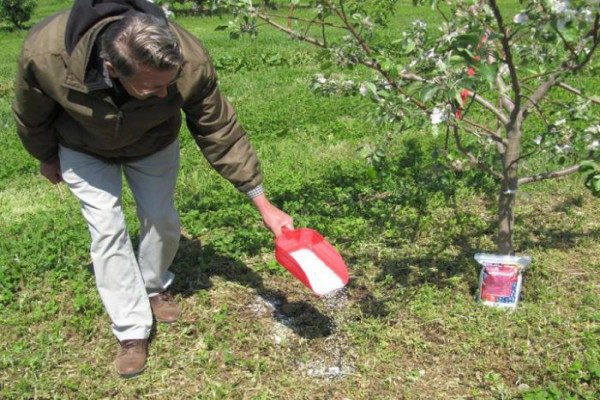
The main thing to not forget about:
- Regular watering,
- Soil fertilizer with various mixtures
- Elimination of the stalk,
- Fight against parasites and pests,
- Seasonal whitewashing of trees.
- Medical events.
Therapeutic measures are based on item number 1 (agricultural technology). Preventing disease is easier than curing a tree.
Root cancer
Root cancer is a bacterial disease. On the roots of the tree nodules, growths of different sizes, which begin to rot. Penetrates bacteria through soil pests.
Appearance of root cancer
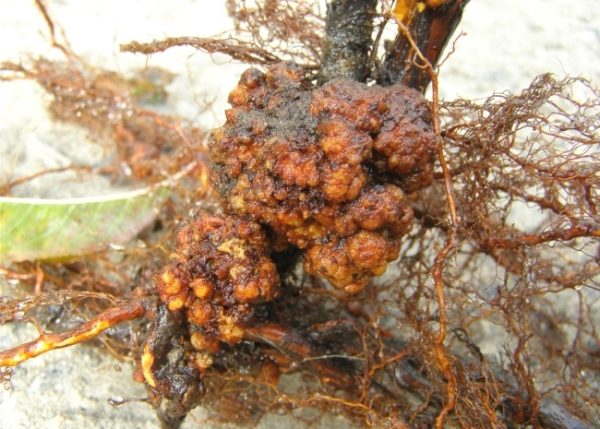
Looks like a whitish shade, soft in structure. Galls can reach 12 cm in diameter, compacting to a solid wooden state.
Harmfulness:
Root growths create a nutritional deficiency for the treereduce its resistance to the environment and durability, also retard sap flow, reducing productivity.
Measures against root cancer
- Before planting their seedlings need inspect carefully for defects or external signs of the disease.
- If growths are found, they should be removed., and a place to disinfect in the bud.
Rust on the apple tree
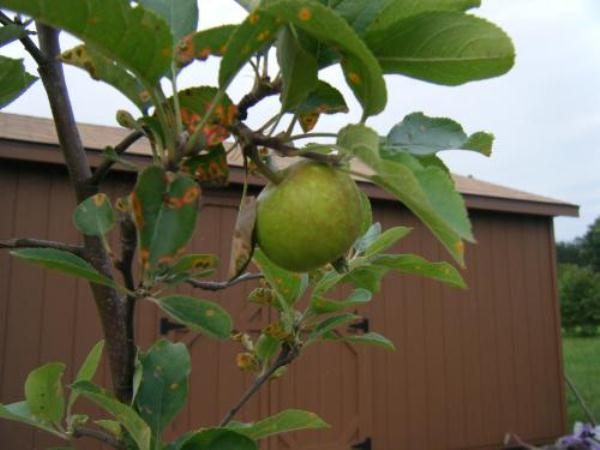
Rust on an apple tree is a common and very dangerous disease of plants in the garden.. It is not difficult to solve the rust - formations (pustules) appear on the apple tree. They have a variety of size and shape, but cracked, showered with powder of rusty color. This is a viral fungus.
Signs of rust on an apple tree
- Bulging spots and stripes rusty color with a characteristic powder.
- Drying and subsidence leaves.
- Star growths on leaves of a yellowish shade.
What is dangerous rust?
- Causes total death of leaves.and then other parts of the tree.
- Reduced winter hardiness, fruit quality, yield in general, the loss of the tree as a whole.
- Moisture loss, which means slowing down photosynthesis in plants.
Treatment
- Protect the apple tree from the juniper in general or green spaces.
- Remove all diseased parts of the tree if it is already infected.
- Spray the damaged area with chemicals.
- In the spring to resume cleaning the affected areas, followed by disinfection.
Brown spotting (phyllostiktosis)
Leaves are not only apple trees, but also pears, plums, quince. Angular, rounded spots with a brown rim appear on the leaves.
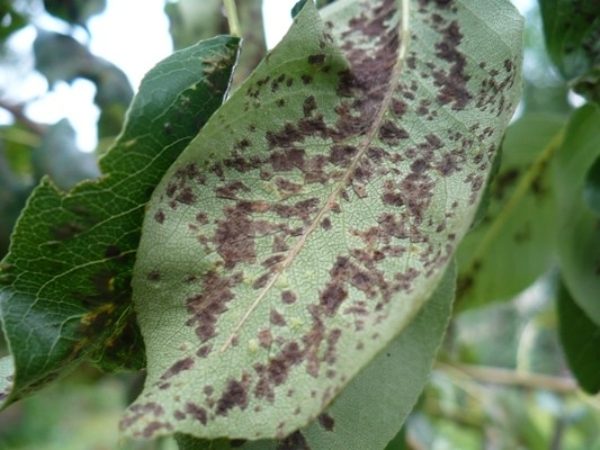
Spots can merge with the color of the leaves, covering the entire surface. In the center of the pigments are clear black dots, the mushrooms themselves. The affected tissue (leaves) exfoliates in the form of a transparent film, and then dies.
Defeat of brown spot comes at the time of processing trees with concentrates, therefore gardeners think that spots are a specific reaction of trees to pesticides.. More young leaves are infected, which after they lose their elasticity and juicy color.
The disease develops in conditions of humidity and poor ventilation, where there is stale air.
Protective measures against leaf disease
- Preference is given to disease-resistant breeds of apple trees;
- Compliance with agrotechnical, chemical rules of care;
- The use of fertilizers, fertilizing, spraying and natural solutions.
Disease control measures
- Growing resistant varieties.
- On private plots there is a collection and burning of fallen leaves.
- In industrial gardens - plowing in order to destroy the affected leaves.
Prevention of apple diseases
It is necessary to prevent any diseases, both in young and in adult plantings. Particular attention should be paid to apples that do not have biological protection against pathogens.. And, of course, it is important to purchase new garden crops that are healthy and beautiful. In order for the apple orchard to reap a harvest, you need to know the general rules for caring for it, as well as the dangers that can be avoided.
- Viruses.
To prematurely prevent viral diseases, an apple tree pest control system is implemented.It includes spraying against aphids and cicadas. To do this, use the available insecticides in your stores.
- When to sprinkle an apple tree?
In early spring before blooming buds, as well as in mid-autumn until the first cold. This prevention kills insects and fungal plants that encroach on the health of apple trees or, conversely, produces against the immune system of the tree.
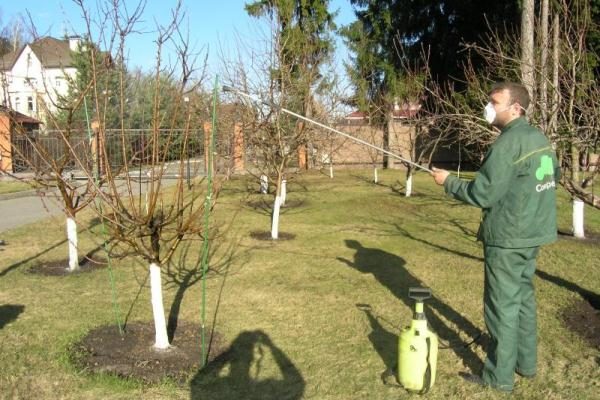
- Natural immunity.
The main prerequisite for the normal growth and development of a tree is the presence of stable immunity. This can be achieved by observing the rules for caring for apple trees: fertilizer, fertilizing, watering, pruning crown, weeding, tillage, spraying against bugs. All these procedures will be the key to good health of your garden pet.
- Small Leaf.
So that your garden is not exposed to small leaves among the trees, you can plant alfalfa near the apple planting, which provides nearby plants with phosphates, zinc and copper.
- Whitewashing apple.
Apple whitewash schedule - 2 times a year. At the same time, remember that you need to whiten not only the trunk of the tree, but also the branches of the lower tier.
- Top dressing of an apple-tree.
Top dressing is carried out 3-4 times per season.Top dressing is intended for soil penetration, and top dressing is a spraying method. The rule is that in dry weather, we use a liquid fertilizer, and in wet weather - dry.

- Pruning and processing of the trunk.
Sanitary pruning is the removal of broken and diseased branches. Cleaning of the bark is carried out on a mandatory basis, after which all the cracks on the bark are processed by the bark.
- Digging the soil.
After removing weeds and excess plants, start digging up the soil to a depth of 10 cm. Try not to injure the roots of the tree. While digging around the perimeter, scatter mineral fertilizers that are well absorbed by the roots during this period.
Conclusion
Diseases and parasites of our apple trees - a real problem in the garden. But if you grow a young apple orchard wisely, to be able to help your favorite tree in a timely manner, then you will not only cure it, but, perhaps, save life.

The fact that it is recommended to gloss over with garden pitch is a controversial recommendation, because what is sold in the stores can be called a tree killer - you can destroy the whole tree with this wound on the tree Barka tree begins to exfoliate, it starts to hurt and if not to apply cardinal measures - it can die! From my point of view, it is better to use clay and tie it with a cloth.